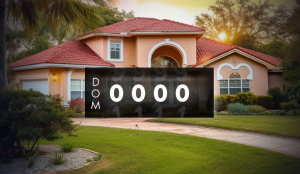The New York Property Condition Disclosure Statement
Go Back To Previous PageThe Property Condition Disclosure Statement (PCDS) law in New York has undergone significant changes, with Governor Hochul signing A.1967/S.5400. The new law eliminates the option for sellers to provide a $500 credit to buyers at closing instead of filling out the PCDS. Additionally, it adds questions on the PCDS regarding the property’s flood history and risk, making it more comprehensive.
What is a Property Condition Disclosure Statement?
The Property Condition Disclosure Act was established in Article 14 of the New York Real Property Law, It requires sellers of real, residential property to provide a Property Condition Disclosure Statement to a prospective buyer.
Condition Disclosure Statement to a prospective buyer.
Real residential property refers to single-family homes currently used as a residence for one or more people. This term excludes vacant lots, condominiums, co-ops, and any property owned by a homeowner’s association that the seller does not fully own.
A property condition disclosure statement (PCDS) is vital for property sales, providing important information on the property’s condition.
The seller completes it and then gives it to the buyer as part of the sales process.
Both parties must sign the document to acknowledge its completion and accuracy before the buyer signs the final contract. A PCDS is a valuable disclosure tool that protects buyers from unexpected and costly repairs or renovations after purchasing a property.
Who must complete a Property Condition Disclosure Statement (PCDS)?
Before recent changes in New York law, sellers could avoid completing a PCDS by paying a $500 credit toward the purchase price of the property. This loophole allowed sellers to treat the PCDS as an optional requirement and view the $500 credit as a routine business expense.
On September 22, 2023, Governor Hochul signed bill A.1967/S.5400 into law, eliminating the $500 credit option. This law added several questions to the disclosure form. These changes aim to protect New Yorkers from the frequent and extreme flooding that the state has experienced recently.
As a result, starting March 10, 2024, all sellers of residential property must complete a Property Condition Disclosure Statement (PCDS). Otherwise, they face potential liability for failing to do so.
According to the Property Condition Disclosure Act, the real estate broker of a listing must notify the seller that they must complete and provide the Property Condition Disclosure Statement (PCDS) to potential buyers. In addition, the buyer’s broker (or the seller’s broker if a broker does not represent the buyer) must inform the buyer of their right to receive the form.
Both parties must sign the PCDS before the buyer signs the contract.
What does a Property Condition Disclosure Statement include?
A Property Condition Disclosure Statement (PCDS) typically includes information about a property’s age, ownership, drainage, mold and termite history, and shared features.
With the passing of A.1967, the New York PCDS will have several new questions relating to the property’s flood history and flood insurance requirements.
It is important to determine if a property is in a flood plain and whether it falls under federal law requirements for obtaining and maintaining flood insurance. You can do it by referring to FEMA’s flood insurance rate maps and reviewing the flood insurance history of the property.
The new flood risk disclosure in New York State is set to provide potential home buyers with crucial information about the flood risk of the property they are considering purchasing. This will empower them to make informed decisions before finalizing the sale. It is mandatory for sellers to answer all questions truthfully, based on their knowledge when signing the PCDS.
A seller may not inspect the property to complete the PCDS.
What happens if a seller fails to complete a PCDS?
Authorities eliminated the $500 credit option. Now, if a seller intentionally fails to provide a PCDS (Property Condition Disclosure Statement) to the buyer, they are responsible for any actual damages suffered by the buyer. This is in addition to any existing equitable or statutory remedies.
The PCDS will implement new changes effective from March 20, 2024. These changes will increase seller responsibilities and give prospective buyers a more comprehensive view of their potential home.
An Agent’s Duty Under Section 466
Although Section 466 of the RPL remained unchanged, it is important to review the duties of a real estate licensee in connection with the PCDS. The said section states:
As a listing broker representing a seller of residential real property, you must inform your client about their obligations under this article.
Similarly, if you are representing a buyer of residential real property or if you are the agent representing a seller of residential real property who is dealing with a prospective buyer, you should make sure to inform the buyer of their rights and obligations under this article before they sign a binding contract of sale. Remember to do so promptly.
According to Section 466, once agents fulfill their obligations, they have no further duties under the article and are not liable for any violation. When the 2002 PCDSA was implemented, NYSAR developed general broker/agent disclosure confirmation forms that real estate licensees could use to confirm that they delivered the PCDS to the seller and informed buyers of their rights and obligations under the PCDSA.


